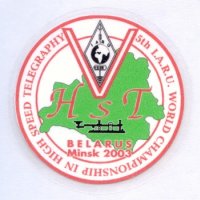
Morse code is a telecommunications method which encodes text characters as standardized sequences of two different signal durations, called dots and dashes, or dits and dahs. Morse code is named after Samuel Morse, one of the early developers of the system adopted for electrical telegraphy.
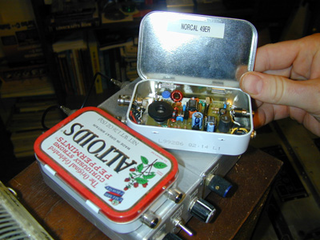
In amateur radio, QRP operation refers to transmitting at reduced power while attempting to maximize one's effective range. QRP operation is a specialized pursuit within the hobby that was first popularized in the early 1920s. QRP operators limit their transmitted RF output power to 5 W or less regardless of mode.
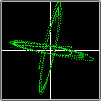
Radioteletype (RTTY) is a telecommunications system consisting originally of two or more electromechanical teleprinters in different locations connected by radio rather than a wired link. Radioteletype evolved from earlier landline teleprinter operations that began in the mid-1800s. The US Navy Department successfully tested printing telegraphy between an airplane and ground radio station in 1922. Later that year, the Radio Corporation of America successfully tested printing telegraphy via their Chatham, Massachusetts, radio station to the R.M.S. Majestic. Commercial RTTY systems were in active service between San Francisco and Honolulu as early as April 1932 and between San Francisco and New York City by 1934. The US military used radioteletype in the 1930s and expanded this usage during World War II. From the 1980s, teleprinters were replaced by personal computers (PCs) running software to emulate teleprinters.

Wireless telegraphy or radiotelegraphy is transmission of text messages by radio waves, analogous to electrical telegraphy using cables. Before about 1910, the term wireless telegraphy was also used for other experimental technologies for transmitting telegraph signals without wires. In radiotelegraphy, information is transmitted by pulses of radio waves of two different lengths called "dots" and "dashes", which spell out text messages, usually in Morse code. In a manual system, the sending operator taps on a switch called a telegraph key which turns the transmitter on and off, producing the pulses of radio waves. At the receiver the pulses are audible in the receiver's speaker as beeps, which are translated back to text by an operator who knows Morse code.

Vibroplex is the brand of side-to-side mechanical, semi-automatic Morse key first manufactured and sold in 1905 by the Vibroplex Company, after its invention and patent by Horace Greeley Martin of New York City in 1904. The original device became known as a "bug", most likely due to the original logo, which showed an "electrified bug". The Vibroplex Company has been in business continuously for 119 years, as of 2024. Amateur radio operator Scott E. Robbins, also known by the call sign W4PA, became the eighth owner of the Vibroplex Company on December 21, 2009. The company is located in Knoxville, Tennessee.
The Maidenhead Locator System is a geocode system used by amateur radio operators to succinctly describe their geographic coordinates, which replaced the deprecated QRA locator, which was limited to European contacts. Its purpose is to be concise, accurate, and robust in the face of interference and other adverse transmission conditions. The Maidenhead Locator System can describe locations anywhere in the world.
CQ is a station code used by wireless operators derived from long established telegraphic practice on undersea cables and landlines, particularly used by those communicating in Morse code,, but also by voice operators, to make a general call. Transmitting the letters CQ on a particular radio frequency means that the transmission is a broadcast or "General Call" to anyone listening, and when the operator sends "K" or says "Go Ahead" it is an invitation for any licensed radio station listening on that frequency to respond. Its use on radio matched the existing use on Morse landline telegraphy and dates from the earliest wireless stations. It was widely used in point-to-point diplomatic and press services, maritime, aviation, and police services until those services eliminated Morse radiotelegraphy. It is still widely used in amateur radio which still has active use of Morse radiotelegraphy.
Modulated continuous wave (MCW) is Morse code telegraphy transmitted using an audio tone to modulate a carrier wave.

Contesting is a competitive activity pursued by amateur radio operators. In a contest, an amateur radio station, which may be operated by an individual or a team, seeks to contact as many other amateur radio stations as possible in a given period of time and exchange information. Rules for each competition define the amateur radio bands, the mode of communication that may be used, and the kind of information that must be exchanged. The contacts made during the contest contribute to a score by which stations are ranked. Contest sponsors publish the results in magazines and on web sites.
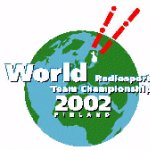
Radiosport is formal competition among amateur radio operators in any of three amateur radio activities: ARDF, DXing, and Contesting. The Friendship Radiosport Games is an international multi-sport event that includes all three types of radiosport. Since 1977, the International Amateur Radio Union has sponsored the IARU HF World Championship. The World Radiosport Team Championship is another international competition.

American Morse Code — also known as Railroad Morse—is the latter-day name for the original version of the Morse Code developed in the mid-1840s, by Samuel Morse and Alfred Vail for their electric telegraph. The "American" qualifier was added because, after most of the rest of the world adopted "International Morse Code," the companies that continued to use the original Morse Code were mainly located in the United States. American Morse is now nearly extinct—it is most frequently seen in American railroad museums and American Civil War reenactments—and "Morse Code" today virtually always means the International Morse which supplanted American Morse.

Amateur radio direction finding is an amateur racing sport that combines radio direction finding with the map and compass skills of orienteering. It is a timed race in which individual competitors use a topographic map, a magnetic compass and radio direction finding apparatus to navigate through diverse wooded terrain while searching for radio transmitters. The rules of the sport and international competitions are organized by the International Amateur Radio Union. The sport has been most popular in Eastern Europe, Russia, and China, where it was often used in the physical education programs in schools.

The World Radiosport Team Championship is an amateur radio competition. Participation is by invitation only. Entry to each quadrennial WRTC requires qualification through high positions in major world radio contests. The main principle of the WRTC is to provide a level playing field for the qualified contestants from around the world to compete against one another using amateur radio stations located in areas with the same propagation terrain and equipped with identical antennas, operating under the keen eyes of qualified referees. Each WRTC event is organised by a volunteer group of Radio Amateurs in the locality where the competition will be held with the help of a standing committee of internationally recognized contesters. The WRTC is the closest thing to a world championship in the sport of radio contesting. In 2018 over 1000 people are involved with a cost of over half a million Euros. WRTC2018 web page
The Friendship Radiosport Games (FRG) is an international multi-sport event that includes competitions in the various sports collectively referred to as radiosport. The Friendship Radiosport Games began in 1989 as a result of a sister city agreement between Khabarovsk, Russia and Portland, Oregon, United States. Since then, participation has been extended to other sister cities in the Pacific Rim. The Friendship Radiosport Games are generally held in the month of August.

In the United States, amateur radio licensing is governed by the Federal Communications Commission (FCC). Licenses to operate amateur stations for personal use are granted to individuals of any age once they demonstrate an understanding of both pertinent FCC regulations and knowledge of radio station operation and safety considerations. There is no minimum age for licensing; applicants as young as five years old have passed examinations and were granted licenses.

Procedural signs or prosigns are shorthand signals used in Morse code telegraphy, for the purpose of simplifying and standardizing procedural protocols for landline and radio communication. The procedural signs are distinct from conventional Morse code abbreviations, which consist mainly of brevity codes that convey messages to other parties with greater speed and accuracy. However, some codes are used both as prosigns and as single letters or punctuation marks, and for those, the distinction between a prosign and abbreviation is ambiguous, even in context.

Amateur radio, also known as ham radio, is the use of the radio frequency spectrum for purposes of non-commercial exchange of messages, wireless experimentation, self-training, private recreation, radiosport, contesting, and emergency communications. The term "amateur" is used to specify "a duly authorized person interested in radioelectric practice with a purely personal aim and without pecuniary interest"; and to differentiate it from commercial broadcasting, public safety, or professional two-way radio services.
In CW Morse code operations, QSK or full break-in operation describes an operating mode in which the transmitting station can detect signals from other stations between the elements or letters of the Morse transmission. This allows other stations to interrupt the transmitting station between individual coding elements, and such allows for a conversational style of communication.
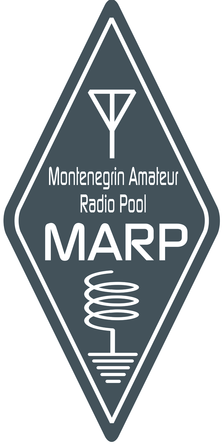
The Montenegrin Amateur Radio Pool (MARP) is a national non-profit organization for amateur radio enthusiasts in Montenegro.

